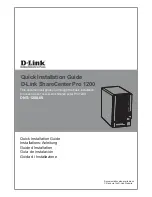
1-7
Cisco ME 3800X and 3600X Switch Software Configuration Guide
OL-23400-01
Chapter 1 Overview
Features
•
Source and destination MAC-based ACLs for filtering non-IP traffic
•
Support for 3DES and AES with version 3 of the Simple Network Management Protocol (SNMPv3).
This release adds support for the 168-bit Triple Data Encryption Standard (3DES) and the 128-bit,
192-bit, and 256-bit Advanced Encryption Standard (AES) encryption algorithms to SNMPv3.
Quality of Service and Class of Service Features
•
Cisco modular quality of service (QoS) command-line (MQC) implementation
•
Three levels of hierarchical output queueing
•
Classification based on IP precedence, Differentiated Services Code Point (DSCP), and IEEE
802.1p class of service (CoS) packet fields, ACL lookup, and multiprotocol label switching (MPLS)
Experimental bits, or assigning a discard class or QoS label for output classification
•
Policing
–
One-rate policing based on average rate and burst rate for a policer
–
Two-color policing that allows different actions for packets that conform to or exceed the rate
–
Ingress two-rate, three-color policing for individual or aggregate policers
•
Weighted tail drop (WTD) as the congestion-avoidance mechanism for managing the queue lengths
and providing drop precedences for different traffic classifications
•
Queuing and Scheduling
–
Deficit round robin traffic shaping to mix packets from all queues to minimize traffic burst
–
Class-based traffic shaping to specify a maximum permitted average rate for a traffic class
–
Port shaping to specify the maximum permitted average rate for a port
–
Class-based weighted queuing (CBWFQ) to control bandwidth to a traffic class
–
WTD to adjust queue size for a specified traffic class
–
Low-latency priority queuing to allow preferential treatment to certain traffic
•
Per-port, per-VLAN QoS to control traffic carried on a user-specified VLAN for a given interface.
You can use hierarchical policy maps for per-VLAN classification and apply the per-port,
per-VLAN hierarchical policy maps to trunk ports.
Layer 2 Virtual Private Network Services
•
IEEE 802.1Q tunneling on EFPs to enable service providers to offer multiple point Layer 2 VPN
services to customers
•
Layer 2 protocol tunneling on EFPs to enable customers to control protocols, such as BPDU, CDP,
VTP, LLDP, MSTP, PAgP, LACP, and UDLD protocols, to be tunneled across service-provider
networks.
•
Support for Ethernet over multiprotocol layer switching (EoMPLS) tunneling mechanism for
transporting Ethernet frames over a service-provider MPLS network
•
Support for Layer 2 transport over MPLS interworking for Ethernet and VLAN interworking.
•
Pseudowire redundancy to allow service providers to configure their multiprotocol label switching
(MPLS) networks to detect network failures and to reroute Layer 2 services to another endpoint.
















































